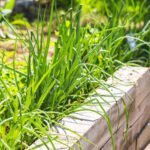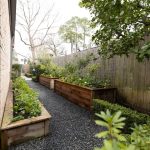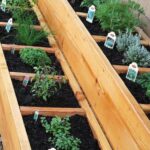Zone 7 is a region in the United States that experiences a specific set of climate conditions, making it ideal for vegetable gardening. Understanding Zone 7 and its unique characteristics is crucial for successful vegetable cultivation in this area. In this article, we will explore what exactly Zone 7 is, why it is important for vegetable gardening, and provide a comprehensive calendar outlining when to plant and harvest various vegetables throughout the year.
Zone 7 refers to an area in the United States that falls within a specific range on the USDA Plant Hardiness Zone Map. This map classifies regions based on their average minimum winter temperatures, helping gardeners determine which plants are most likely to thrive in their particular climate. Zone 7 typically includes parts of the South and Mid-Atlantic states, as well as some areas along the West Coast.
So why is understanding Zone 7 important for vegetable gardening? The climate conditions in this zone play a significant role in determining which crops can be successfully grown and when they should be planted. The average last frost date in spring and first frost date in fall are key factors to consider, as they dictate the length of your growing season. By familiarizing yourself with your specific zone’s planting schedule, you can optimize your chances of a bountiful harvest.
In the following sections of this article, we will delve deeper into the climate conditions specific to Zone 7 and their impact on vegetable gardening. We will also provide a month-by-month breakdown of when to sow and transplant different vegetables, offer tips for preparing the soil, discuss common pests and diseases, explore harvesting and storage techniques, share methods to extend the growing season, and summarize the benefits and challenges of vegetable gardening in Zone 7.
So let’s get started with our Zone 7 vegetable gardening calendar.
Understanding the Climate
Zone 7 is characterized by its unique climate conditions, which greatly influence the success of vegetable gardening in this region. Located in the middle of the United States, Zone 7 experiences a moderate climate with four distinct seasons. This section will delve into the specific climate factors that gardeners in Zone 7 must consider when planning their vegetable gardens, including temperature ranges, precipitation patterns, and frost dates.
Temperature Ranges
One of the key aspects of understanding the climate in Zone 7 is familiarizing oneself with the temperature ranges experienced throughout the year. Summers are usually hot and dry, with average high temperatures ranging from 85°F to 95°F (29°C to 35°C), while winters can be cold but milder compared to regions farther north, with average low temperatures between 20°F and 30°F (-6°C to – 1°C).
These temperature ranges make it possible for a wide variety of vegetables to thrive in Zone 7. However, gardeners need to choose appropriate varieties that can handle both heat and cold if they want a successful harvest year-round.
Precipitation Patterns
Precipitation patterns also play a crucial role in vegetable gardening in Zone 7. On average, Zone 7 receives about 40 to 50 inches of rainfall annually. The distribution of rainfall tends to vary throughout the year, with most rain falling during spring and autumn.
Summers tend to be drier, which means gardeners must provide supplemental irrigation to ensure healthy plant growth. It’s essential for gardeners to monitor rainfall amounts and watering needs closely as inadequate or excessive moisture can lead to problems such as wilting or root rot.
Frost Dates
Frost dates are another vital climatic factor that impact vegetable gardening in Zone 7. The last spring frost typically occurs in mid to late April, while the first fall frost usually arrives in mid-October.
These frost dates are essential for determining the appropriate planting and harvesting times of different vegetable crops. Gardeners need to be aware of these dates and choose vegetables that can withstand light frosts or plan strategies such as using protective covers or cold frames to extend the growing season.
Understanding the specific climate conditions in Zone 7 is crucial for successful vegetable gardening. By considering temperature ranges, precipitation patterns, and frost dates, gardeners can make informed decisions regarding plant selection, irrigation practices, and timing of various gardening tasks. With this knowledge in mind, let’s dive into the Zone 7 planting schedule and discover when to sow and transplant different vegetables throughout the year.
Zone 7 Planting Schedule
Understanding the Planting Seasons
In Zone 7, the climate is characterized by mild winters and hot summers, making it suitable for a wide variety of vegetables throughout the year. However, to ensure successful growth and production, it is important to understand the planting seasons within Zone 7.
Warm-Season Crops
Warm-season crops are those that thrive in the heat and require soil temperatures above 50°F (10°C) for germination. These include popular vegetables such as tomatoes, peppers, cucumbers, beans, and corn. In Zone 7, these crops are typically planted after the last frost date, which usually falls sometime between March and April. The warm weather in Zone 7 allows for a long growing season for these crops, giving them ample time to mature and produce abundant harvests.
Cool-Season Crops
Cool-season crops prefer cooler temperatures and can tolerate light frosts. Examples of cool-season crops include lettuce, spinach, radishes, carrots, broccoli, and peas. In Zone 7, these crops can be started earlier in the year before the last frost date or planted in late summer/early fall for a second harvest.
It’s important to note that cool-season crops should be planted during months with average temperatures below 70°F(21°C). This ensures that they do not bolt (prematurely flower) due to excessive heat.
A Month-by-Month Guide
For your convenience and success in gardening your Zone 7 vegetable garden year-round, here is a month-by-month breakdown of when to sow and transplant different vegetables:
- January: Start planning your garden layout by considering crop rotation principles.
- February: Begin indoor seed starting for warm-season crops like tomatoes and peppers.
- March: Transplant any indoor-started warm-season crops into prepared beds.
- April: Direct sow cool-season crops such as lettuce, spinach, and radishes.
- May: Sow seeds for warm-season vegetables like cucumbers, squash, and beans.
- June: Continue succession planting of warm-season crops for a continuous harvest.
- July: Harvest warm-season crops like tomatoes and peppers as they ripen.
- August: Start sowing cool-season crops for a fall harvest. Also start planning cover crops to improve soil fertility during the winter months.
- September: Transplant any indoor-started cool-season crops into the garden. Sow quick-maturing varieties for a final fall harvest before the first frost arrives.
- October: Finish harvesting remaining warm-season crops. Clean up the garden beds and prepare for winter by mulching or adding winter cover crop to protect the soil
- November/December: Focus on indoor gardening activities such as starting seedlings for next year’s garden.
By following this planting schedule specific to Zone 7, you can ensure that your vegetable garden remains productive throughout the year and maximizes your chances of successful harvests.
Preparing the Soil
Preparing the soil is a crucial step in ensuring successful vegetable gardening in Zone 7. The quality of the soil directly affects plant growth and productivity, so it is important to take the time to properly prepare the soil before planting. This section will provide tips and techniques for preparing the soil in Zone 7, including soil testing and amendments.
One important step in preparing the soil is conducting a soil test. Soil testing provides valuable information about the pH level and nutrient content of the soil, allowing you to make informed decisions about fertilizer and amendments. It is recommended to conduct a soil test at least once every three years to ensure that your plants have all the necessary nutrients for healthy growth.
Based on the results of your soil test, you may need to amend your soil with organic matter or fertilizers. Adding organic matter such as compost or well-rotted manure improves soil structure, drainage, and nutrient availability. It also helps increase water retention in sandy soils and improves aeration in clay soils. Fertilizers can be used to supplement any nutrient deficiencies identified through the soil test.
In addition to adding organic matter and fertilizers, proper tilling or cultivating techniques can also improve soil health. Before planting, it is important to remove any weeds or debris from the area. Then, using a garden fork or tiller, loosen up the top few inches of soil to improve its texture and promote good root development.
| Soil Preparation Technique | Description |
|---|---|
| Soil Testing | A process of analyzing a sample of soil to determine its pH level and nutrient content. |
| Adding Organic Matter | Incorporating compost or well-rotted manure into the soil to improve its structure, drainage, and nutrient availability. |
| Fertilization | Using fertilizers to supplement any nutrient deficiencies identified through a soil test. |
| Tilling or Cultivating | Loosening the top few inches of soil with a garden fork or tiller to improve its texture and promote good root development. |
By following these tips and techniques for preparing the soil, you can create an optimal growing environment for your vegetable garden in Zone 7. Taking the time to properly prep your soil will pay off in healthier plants, higher yields, and a more enjoyable gardening experience.
Recommended Vegetables for Zone 7
In Zone 7, there are a wide variety of vegetables that thrive in the climate conditions. Whether you prefer leafy greens, root vegetables, or vine crops, there is something for everyone to grow successfully in this region. Here is a comprehensive list of recommended vegetables for Zone 7, along with their growing requirements and potential challenges.
- Leafy Greens: Lettuce, spinach, kale, and Swiss chard are all great options for Zone 7 vegetable gardens. These cool-season crops can be sown as early as late winter or early spring for a bountiful harvest in the cooler months. They prefer well-drained soil with plenty of organic matter and require consistent moisture to prevent bolting.
- Root Vegetables: Carrots, radishes, beets, and turnips are popular root vegetables that can flourish in Zone These crops should be directly sown into the garden bed once the soil has warmed up in early spring. They require loose soil free from rocks or clumps to promote healthy root development.
- Nightshades: Tomatoes, peppers, and eggplants belong to the nightshade family and can thrive in the warm summers of Zone Start seeds indoors six to eight weeks before the last frost date or purchase transplants from nurseries for an earlier harvest. These plants need full sun exposure and well-drained soil rich in organic matter.
- Vine Crops: Cucumbers, melons, squash, and zucchini are vine crops that excel in Zone 7 gardens. Directly sow seeds once temperatures have consistently warmed up above 60°F (15°C) for successful germination. These plants benefit from ample sunlight and prefer loamy soil with good drainage.
- Brassicas: Broccoli, cabbage, cauliflower, and Brussels sprouts are cold-hardy brassicas that grow exceptionally well in Zone 7’s mild winters and moderate summers. Start seeds indoors four to six weeks before the last frost date or purchase transplants for an earlier harvest. These plants require fertile soil with a slightly alkaline pH level.
While these are just a few examples, there are many other vegetables that can thrive in Zone 7 gardens, such as beans, peas, herbs like basil and parsley, and various salad greens. It’s essential to read seed packets or plant labels for specific growing requirements and potential challenges each vegetable may have in Zone 7.
By choosing the right vegetables for your garden and providing them with optimal growing conditions, you can enjoy a bountiful harvest throughout the growing season.
Pest and Disease Control
Vegetable gardens in Zone 7 are prone to a variety of pests and diseases that can potentially damage or destroy crops if not properly managed. It is important for gardeners in this region to be aware of these common issues and take preventive measures to ensure a successful harvest. Here are some of the most common pests and diseases in Zone 7 vegetable gardens, along with organic strategies to prevent and manage them:
- Aphids: These tiny insects feed on plant sap, causing leaves to curl, wilt, or yellow. To control aphids organically, you can introduce beneficial insects such as ladybugs or lacewings, or use insecticidal soaps or neem oil sprays.
- Tomato Hornworms: These large green caterpillars can quickly defoliate tomato plants. Hand-picking is an effective method of control, but you can also attract natural enemies like parasitic wasps by planting pollen-rich flowers nearby.
- Powdery Mildew: This fungal disease appears as white powdery patches on leaves, stems, and fruit surfaces. To prevent powdery mildew, choose resistant varieties when possible, provide adequate air circulation by spacing plants properly, and avoid overhead watering.
- Flea Beetles: These small black beetles chew tiny holes in leaves, severely damaging young seedlings. Row covers can help protect plants from flea beetle feeding until they become established.
- Blossom End Rot: A physiological disorder characterized by dark sunken patches at the blossom end of fruits such as tomatoes and peppers. Consistent soil moisture is crucial for preventing blossom end rot; water deeply during dry periods and mulch around plants to retain moisture.
- Cabbage Loopers: The larvae of cabbage butterflies feed on cabbage family crops such as kale, cabbage, and broccoli. Hand-picking, floating row covers, and Bt (Bacillus thuringiensis) sprays are effective control methods.
It is important to regularly monitor plants for signs of pests or diseases and take immediate action to prevent further damage. By implementing these organic strategies, Zone 7 vegetable gardeners can successfully manage the most common pests and diseases and protect their crops throughout the growing season.
Harvesting and Storing
Once your vegetables have reached their peak ripeness, it is important to harvest them at the right time for optimal flavor and freshness. In Zone 7, the timing of harvesting can vary depending on the specific vegetable and the growing conditions. Here are some general guidelines for harvesting common vegetables in Zone 7:
- Tomatoes: Harvest tomatoes when they have reached their full color and are firm to the touch. Avoid leaving them on the vine too long, as they can become overripe or prone to damage from pests.
- Cucumbers: For crisp cucumbers, harvest them when they reach a length of 6-8 inches. Be sure to check daily, as they can quickly become overripe and develop a bitter taste if left on the vine too long.
- Leafy Greens (e.g., lettuce, spinach): Harvest leafy greens when they have reached a suitable size for consumption. For loose-leaf varieties, you can remove individual leaves as needed for a continuous harvest. Keep in mind that leafy greens tend to bolt in warmer temperatures, so it is best to harvest them before they start producing flowers.
In addition to knowing when to harvest, proper storage techniques are crucial for extending the lifespan of your freshly harvested vegetables:
- Cool and Dry Storage: Most vegetables thrive in cool and dry conditions where humidity is kept low. Ideally, store your harvested vegetables at temperatures around 40°F (4°C) with humidity levels between 60% – 70%. You can achieve this by storing them in a cool basement or root cellar.
- Proper Packaging: To prevent moisture loss and maintain quality, store vegetables in perforated plastic bags or containers with ventilation holes. This allows for sufficient air circulation while protecting them from excess humidity.
- Storing Root Crops: For root crops like carrots, beets, and potatoes, remove the greens before storage. Keep them unwashed in a cool, dark place with good ventilation to prevent mold or decay.
Remember, not all vegetables have the same storage requirements, so it is important to research each specific vegetable for optimal storage conditions and durations. By implementing proper harvesting and storage techniques, you can ensure that your hard work in the garden pays off with a bountiful and long-lasting harvest.
Extending the Growing Season
Zone 7 vegetable gardeners in can take advantage of innovative methods and tools to extend the growing season, allowing for a longer period of vegetable cultivation. By doing so, they can enjoy fresh produce throughout the year, even during cooler months.
One popular method for extending the growing season in Zone 7 is through the use of cold frames or hoop houses. These structures act as mini greenhouses, capturing heat from the sun and protecting plants from cold temperatures. Cold frames are typically made with a transparent lid that can be opened during warmer days and closed at night to trap heat.
Hoop houses are larger structures that use hoops made from PVC pipes or metal bars covered with plastic sheeting to create an enclosed space for plants. Both options help to insulate plants, providing them with a more favorable environment for growth.
Another technique that Zone 7 gardeners can utilize is row covers or frost blankets. These lightweight fabric covers can be spread directly over crops to provide protection against frost and cold temperatures. They allow sunlight, air, and rain to reach plants while trapping warmth underneath. Row covers come in different thicknesses, with heavier ones providing more insulation but also less light transmission. Gardeners should choose the appropriate weight depending on their specific needs and crop requirements.
Furthermore, utilizing heat sources such as mulching and thermal mass can also help extend the growing season in Zone 7 gardens. Applying a thick layer of organic mulch around plants helps retain soil temperature by insulating it from extreme fluctuations. This not only keeps soil warm during colder periods but also conserves moisture and suppresses weed growth.
Additionally, incorporating thermal mass in the garden helps store heat during the day and release it gradually at night when temperatures drop. Examples of thermal mass materials include stone or concrete walls positioned strategically around the garden to absorb and radiate heat.
By employing these innovative growing techniques and tools, Zone 7 vegetable gardeners can successfully extend their growing season and continue cultivating fresh vegetables for a longer period. These methods not only help protect plants from cold temperatures but also create a favorable environment for growth, resulting in bountiful harvests throughout the year.
Conclusion
In conclusion, vegetable gardening in Zone 7 offers a range of benefits and challenges for enthusiastic gardeners. The specific climate conditions of Zone 7, with its moderate temperatures and distinct seasons, provide an ideal environment for growing a wide variety of vegetables throughout the year. By following the provided Zone 7 vegetable gardening calendar, gardeners can ensure that they sow and transplant their crops at the right time, maximizing their chances of success.
However, it is important to note that there are also some challenges to consider when vegetable gardening in Zone 7. The fluctuating temperatures and occasional frost can pose a risk to young seedlings and delicate plants. Additionally, pests and diseases common to this region can cause damage to vegetable crops if not properly managed. However, by following organic pest and disease control strategies outlined in this article, gardeners can effectively prevent and manage these issues.
With all factors considered, now is the perfect time for readers to start their own Zone 7 vegetable garden using the provided calendar as a guide. By taking advantage of the benefits offered by this climate zone, such as a long growing season and abundant plant choices, gardeners can enjoy fresh, homegrown produce throughout most of the year.
Whether you have an existing garden or are starting from scratch, follow the tips on soil preparation, plant selection, pest control, harvesting techniques, and extending the growing season mentioned in this article for a successful vegetable garden in Zone 7.
Frequently Asked Questions
What vegetables grow best in Zone 7?
Zone 7 generally offers a favorable climate for growing a wide range of vegetables. Some of the veggies that tend to thrive in this zone include tomatoes, peppers, beans, cucumbers, and squash.
These warm-season crops appreciate the long growing season and hot summers typically found in Zone 7. Additionally, cool-season vegetables like lettuce, kale, broccoli, and carrots can also be successfully grown by taking advantage of the milder temperatures during spring and fall.
What grows best in 7b?
Zone 7b presents an opportunity to grow an even wider variety of plants due to its slightly warmer climate compared to other regions in Zone 7. In this zone, one can achieve success with heat-loving fruits such as figs, pomegranates, citrus trees (with proper protection during frosty periods), as well as various tropical plants like bananas and avocados.
This milder microclimate allows gardeners to experiment with a greater diversity of crops not commonly seen further north.
When should I plant flower seeds in Zone 7?
The optimal time to plant flower seeds in Zone 7 greatly depends on the specific flowers you wish to grow. Generally, there are two main planting times: spring and fall. For spring flowering plants like pansies or sweet peas, it is recommended to sow the seeds indoors around 6-8 weeks before the last expected frost date for successful transplanting once temperatures are favorable outdoors.
On the other hand, some cold-hardy perennials like foxgloves or black-eyed Susans can be directly sown outdoors in late summer or early fall for blooming the following year. Researching specific flower varieties and their preferred planting times will ensure better chances of success in Zone 7 gardens.

If you’re looking to get into vegetable gardening, or are just looking for some tips on how to make your current garden better, then you’ve come to the right place! My name is Ethel and I have been gardening for years. In this blog, I’m going to share with you some of my best tips on how to create a successful vegetable garden.





